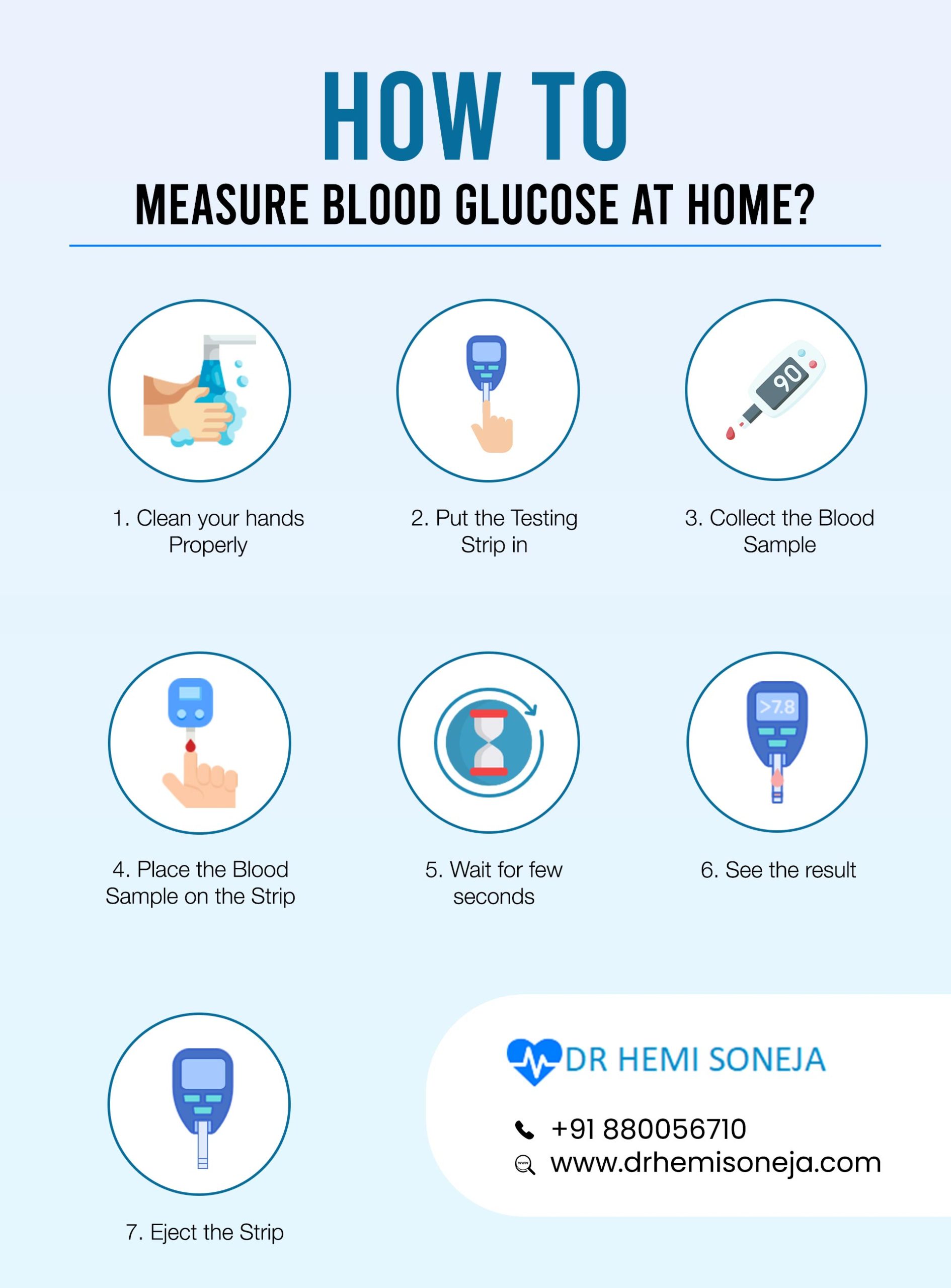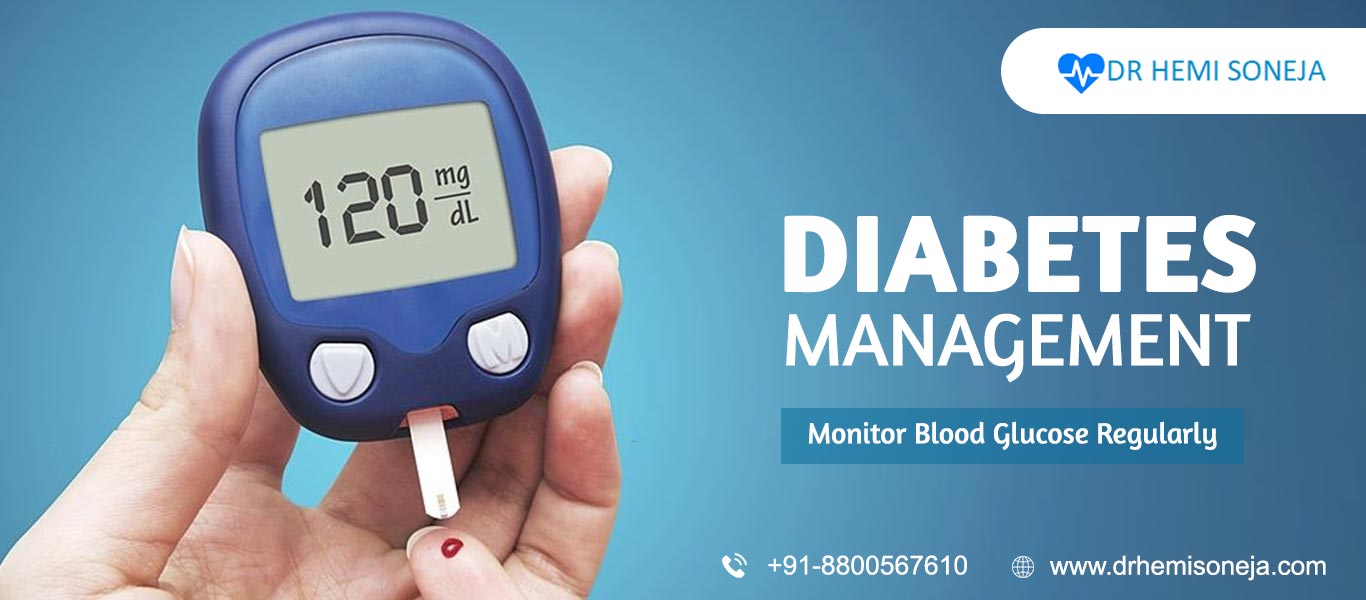According to the Indian Heart Association data, over 135 million Indians will be diagnosed with Diabetes by 2035. Further reports suggest that over 1 million Indians die due to diabetes annually, suggesting an alarming rise in the numbers. The numbers might seem daunting; however, diabetes management can alleviate the terror that this chronic disease has spread across India (and the rest of the world).
The first step to ideal and effective diabetes management is to monitor glucose at home regularly to prevent risks of hyper or hypoglycemic shocks in the patient.
Confused why you should do it and how?
Well, this article will discuss the importance of continuous glucose monitoring and the ways to do it.
1. What is the Significance of Blood Glucose?
Blood glucose is the sugar derivative from the consumed food, processed and carried by the blood to the cells in the body to deliver energy. If your blood glucose levels aren’t in the normal range, you are at heightened risk of developing diabetes and chronic heart diseases.
Our body is programmed to extract the required sugars from the consumed food and process them into the required glucose form that is transported through our bloodstream into the cells.
Throughout the day, our blood glucose levels fluctuate. They peak after meals and then settle down an hour after your primary meals. Your blood glucose level is at the lowest in the morning before your breakfast.
The primary significance of blood glucose is to primarily help maintain the body’s energy levels throughout the day.
2. Symptoms of Low and High Blood Glucose
Any kinds of fluctuations in the blood glucose levels, if left undiagnosed, can prove fatal. Both low glucose levels (hypoglycemia) and high blood glucose levels (hyperglycemia) showcase symptoms that should be immediately reported to a diabetes specialist doctor.
Patients’ ideal blood glucose levels should be below 99 milligrams per deciliter (mg/dL).
Low blood glucose symptoms
If your blood glucose levels are below 70 mg/dL, you are considered hypoglycemic. Common symptoms are:
- Sudden trembling in the hands and other body parts
- Tingling in the extremities of the body
- Sweating
- Pale appearance
- Anxiety
- Dizziness
- Disorientation
- Lightheadedness
- Difficulty concentrating
- Paranoia (in rare cases)
High blood glucose symptoms
If your blood glucose levels are over 125 mg/dL, you are hyperglycemic. Common symptoms include:
- Tiredness
- Blurred vision
- Headache
- Weakness
- Nausea
- Kidney disease
- Vision loss (in severe cases)
- Nerve damage (diabetic neuropathy)
- Foot ulcers
- Poor or delayed wound healing
- Heightened cardiovascular complications
3. Why is Continuous Blood Glucose Monitoring important?
Continuous blood monitoring for diabetes can be done by a home-based device that enables you to manage your Type-1 or Type-2 diabetes with 24-hour monitoring of the blood glucose levels in the body.
If your blood glucose levels fluctuate beyond the normal range throughout the day, despite proper diagnosis and medications, your diabetologist/endocrinologist will suggest wearing a blood glucose monitoring device throughout the day.
How does it work?
The continuous blood glucose monitoring device is wearable technology that alerts you of your blood glucose levels throughout the day. A sensor is placed just under your skin and is programmed to monitor glucose levels for the whole day.
The sensor then sends the signals via a transmitter to the device and your connected smartphone so that you can take precautions and not experience something fatal or drastic. The technology behind a CGM is pretty straightforward, but you do need some time to get used to wearing it the entire day.
Who needs it?
Most diabetes patients rely on fingerstick blood tests or path lab tests every few weeks to keep an eye out for their blood glucose levels. However, the downside to these tests is that they give the results for when the blood is drawn. So, inaccuracies are prevalent.
However, if you need critical diabetes management for your diagnosis, continuous blood glucose monitoring is necessary. Not only does it give you an idea about your physiological functions throughout the day, but it also enables your diabetes specialist to have an insight into the effectiveness of the prescribed medications.
As much as high blood sugar levels are dangerous for your body, the conditions are equally fatal in cases of low blood sugar as well.

4. How to Monitor Blood Glucose?
It doesn’t matter if you are eating healthy and maintaining an active lifestyle for your diabetes; nothing will be effective if you don’t monitor the glucose levels now and then.
While advanced stage Type-2 diabetics and people with type-1 diabetes rely on continuous blood glucose monitoring devices to keep track of the glucose levels. A glucose meter is another convenient way of measuring blood glucose levels in diabetes patients.
These tests come with a monitoring device, lancets, and tiny needles that you use to prick your fingers to draw blood. They also come with a logbook that enables you to record the results and maintain a chart.
Here’s how you can use a blood glucose meter:
- Start by arranging all your equipment, including the glucose meter, lancet, needle, and alcohol prep pad.
- Once done, wash your hands thoroughly for 20 seconds with soap and water to eliminate any germs on your fingertips.
- Prep your glucose meter by inserting the test strip and keeping it switched on.
- Before pricking, take the alcohol prep pad and sterilize the fingertip where you will prick the finger.
- Using the lancet, prick your finger and gently press it to draw out some blood.
- Place the blood drop on the prepped test strip in the machine.
- Clean the pricked finger and wait for the glucose meter to show the results.
If you witness extreme fluctuations in levels in the reading than what you usually get, you must book an immediate consultation with your doctor and get checked and prescribed with an updated diabetes management routine.
Take Away
Managing diabetes is not an option but a necessity if you wish to live a happy and carefree life. At Hemi Soneja Clinic, you get the proper guidance and ideal diabetes management treatment plan that helps you regulate your blood glucose levels.



